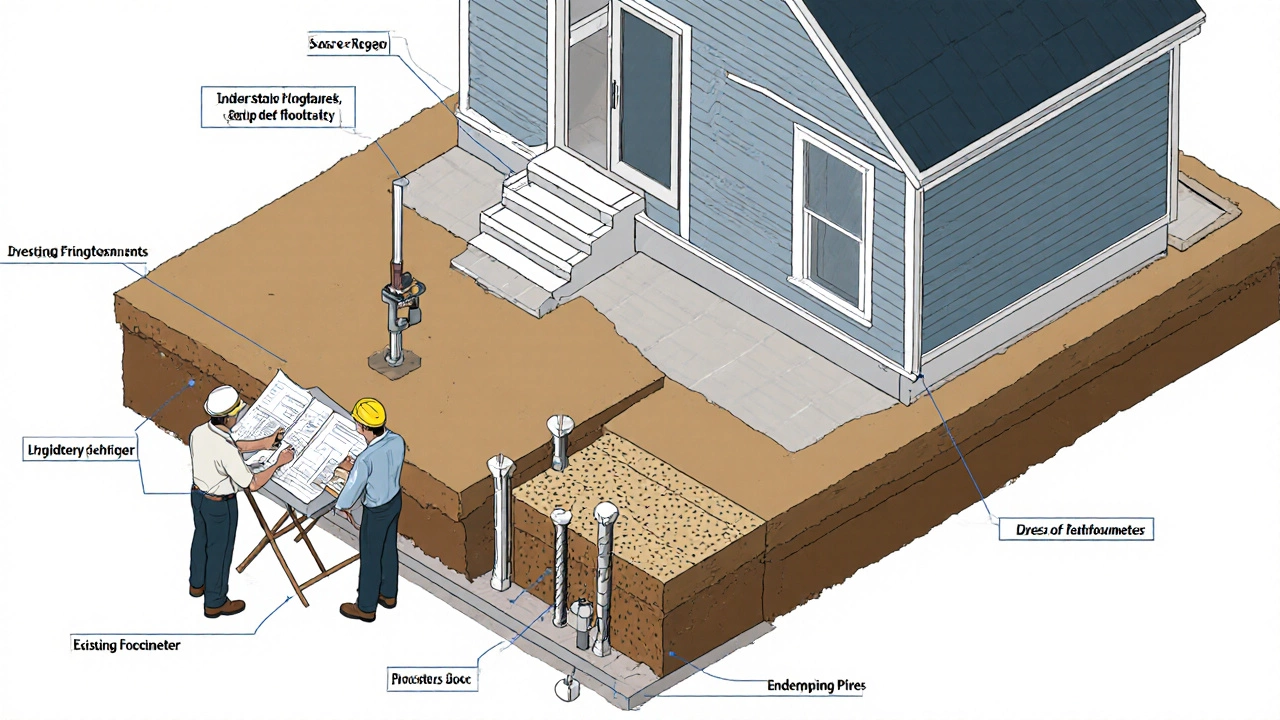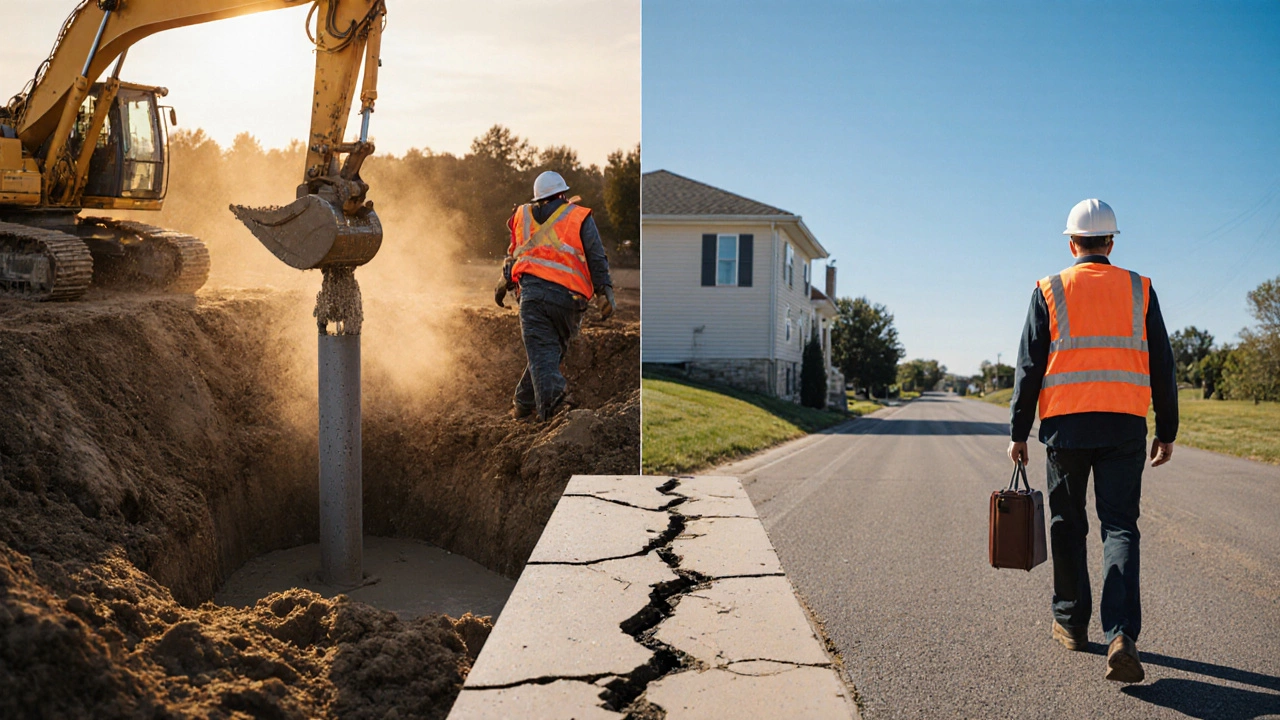Foundation Repair Cost Calculator
Calculate Your Repair Viability
Enter your home's purchase price and repair estimate to determine if fixing foundation issues makes financial sense.
Decision Checklist
When you discover a house with foundation issues structural problems in the base of a building that can cause cracks, uneven floors, and long‑term instability, the gut reaction is often a mix of dread and curiosity. Do you roll up your sleeves and fix the problem, or do you cut your losses and walk away? The answer isn’t simple, but with the right facts, you can make a choice that protects your wallet and peace of mind.
Key Takeaways
- Identify the severity of the problem early with a qualified home inspection a professional evaluation of a property's condition, focusing on structural, mechanical, and safety aspects.
- Get a detailed estimate from a licensed structural engineer a specialist who assesses load‑bearing elements and recommends corrective measures.
- Compare repair costs, timelines, and resale impact against the financial cushion you have.
- Consider local building codes regulations that dictate how foundation work must be performed and any required soil testing analysis of the ground to determine stability and moisture content.
- If the numbers don’t add up, walking away may save you from future buyer’s remorse.
Understanding Foundation Issues
Foundations are the unseen heroes of any building. When they shift, settle, or crack, the whole structure feels the impact. Common signs include:
- Horizontal cracks in walls or brickwork.
- Doors and windows that stick or won’t close properly.
- Uneven floors that can be measured with a level.
- Visible gaps between the foundation and the framing.
These symptoms can stem from poor soil compaction, expansive clay, water intrusion, or even outdated construction methods. In New Zealand, for example, the prevalence of volcanic ash soils means that moisture changes can cause significant movement if not properly mitigated.

Spotting Red Flags During a home inspection a professional evaluation of a property's condition, focusing on structural, mechanical, and safety aspects
A thorough inspection should uncover the root cause, not just the symptoms. Ask the inspector to:
- Document all cracks with photos and measurements.
- Evaluate drainage patterns around the lot.
- Check for signs of past repairs, such as mismatched mortar or new concrete patches.
- Recommend a follow‑up evaluation by a qualified structural engineer a specialist who assesses load‑bearing elements and recommends corrective measures if serious concerns arise.
Skipping this step is a shortcut that often leads to costly surprises later on.
Calculating the Real Cost of foundation repair the process of stabilizing or replacing a building's base to restore structural integrity
Repair costs vary widely based on severity, method, and local labor rates. Here’s a rough breakdown for Auckland in 2025:
- Minor crack stitching and waterproofing: $3,000-$7,000.
- Underpinning (pier installation) for moderate settlement: $12,000-$25,000.
- Full foundation replacement or extensive pier system: $40,000-$80,000.
Don’t forget hidden expenses:
- soil testing analysis of the ground to determine stability and moisture content (often $500-$1,200).
- Permits required by the local council, which can add $1,000-$3,000.
- Potential temporary relocation costs if the house is uninhabitable during repairs.
Ask for a detailed, itemized quote and compare at least two reputable contractors. The lowest price isn’t always the best - consider warranties, past project references, and compliance with building codes regulations that dictate how foundation work must be performed.
When Repair Makes Sense
Repair can be the right move if:
- The issue is isolated (e.g., a single wall crack) and the fix is under $10,000.
- You have a solid resale market and the repaired home can command a price that exceeds the total investment.
- Your mortgage lender the financial institution providing the loan for the purchase allows you to roll repair costs into the loan, keeping monthly out‑of‑pocket expenses low.
- The location is highly desirable, and moving away would mean losing a prime opportunity.
In these scenarios, think of the repair as an upgrade that adds value and peace of mind.

When Walking Away Is the Smarter Move
On the flip side, walk away if:
- Repair estimates exceed 30% of the purchase price.
- The foundation problem is systemic (e.g., pervasive soil movement) and likely to re‑occur.
- Insurance policies label the issue as “pre‑existing,” limiting future coverage.
- You lack the financial buffer for unexpected overruns, which can push a $20,000 repair to $35,000.
Choosing to walk away protects you from long‑term financial strain and the dreaded “buyer’s remorse” that haunts many homeowners who bite off more than they can chew.
Decision Checklist
| Factor | Repair | Walk Away |
|---|---|---|
| Up‑front Cost | Varies $3k-$80k (depends on severity) | None (retain deposit, if any) |
| Time to Close | Additional 1-3 months for work and inspections | Standard closing timeline |
| Resale Impact | Potentially higher value if properly documented | Can pursue other properties without stigma |
| Risk of Recurrence | Low if work follows building codes regulations that dictate how foundation work must be performed and includes soil mitigation | Zero - you avoid the problem entirely |
| Emotional Stress | Moderate - managing contractors and timelines | Low - you move on to a cleaner option |
Use this table as a quick reference, then plug your numbers into the checklist below.
- Do you have an accurate repair quote? (Yes/No)
- Can you secure financing that includes repair costs? (Yes/No)
- Is the property in a high‑demand area where repairs boost resale? (Yes/No)
- Will the repair affect your insurance premiums? (Yes/No)
- Do you have a contingency fund for overruns? (Yes/No)
If you answer “Yes” to most of the above, repair is worth serious consideration. If “No” dominates, start the search for a sounder foundation elsewhere.
Frequently Asked Questions
How can I tell if foundation cracks are serious?
Cracks wider than ¼ inch, diagonal cracks that widen over time, or cracks that appear in multiple rooms usually signal structural movement. A qualified structural engineer a specialist who assesses load‑bearing elements and recommends corrective measures can confirm severity.
Will my mortgage lender require a repair estimate?
Most lenders will ask for a detailed quote and proof that the work meets local building codes regulations that dictate how foundation work must be performed. Some may even hold back a portion of the loan until the repairs are completed and inspected.
Can I negotiate the purchase price because of foundation issues?
Yes. Use the inspection report and repair estimates as leverage. Sellers often agree to a price reduction that reflects the cost of fixing the problem, or they may offer a credit at closing.
What if the repairs don’t solve the problem?
A reputable foundation repair the process of stabilizing or replacing a building's base to restore structural integrity contractor should offer a warranty, typically 5-10 years, covering any recurrent movement. Ensure the warranty is written into the contract.
Is it ever safe to live in a house with minor foundation cracks?
Minor, non‑structural cracks (hairline surface cracks) are generally safe, but they should still be monitored. Regularly check for widening or new cracks, and keep moisture levels stable around the foundation.
Bottom line: foundation issues are a red flag, not a death sentence. By gathering solid data, weighing costs against benefits, and trusting the right experts, you can either fix the problem or walk away without looking back.




Write a comment